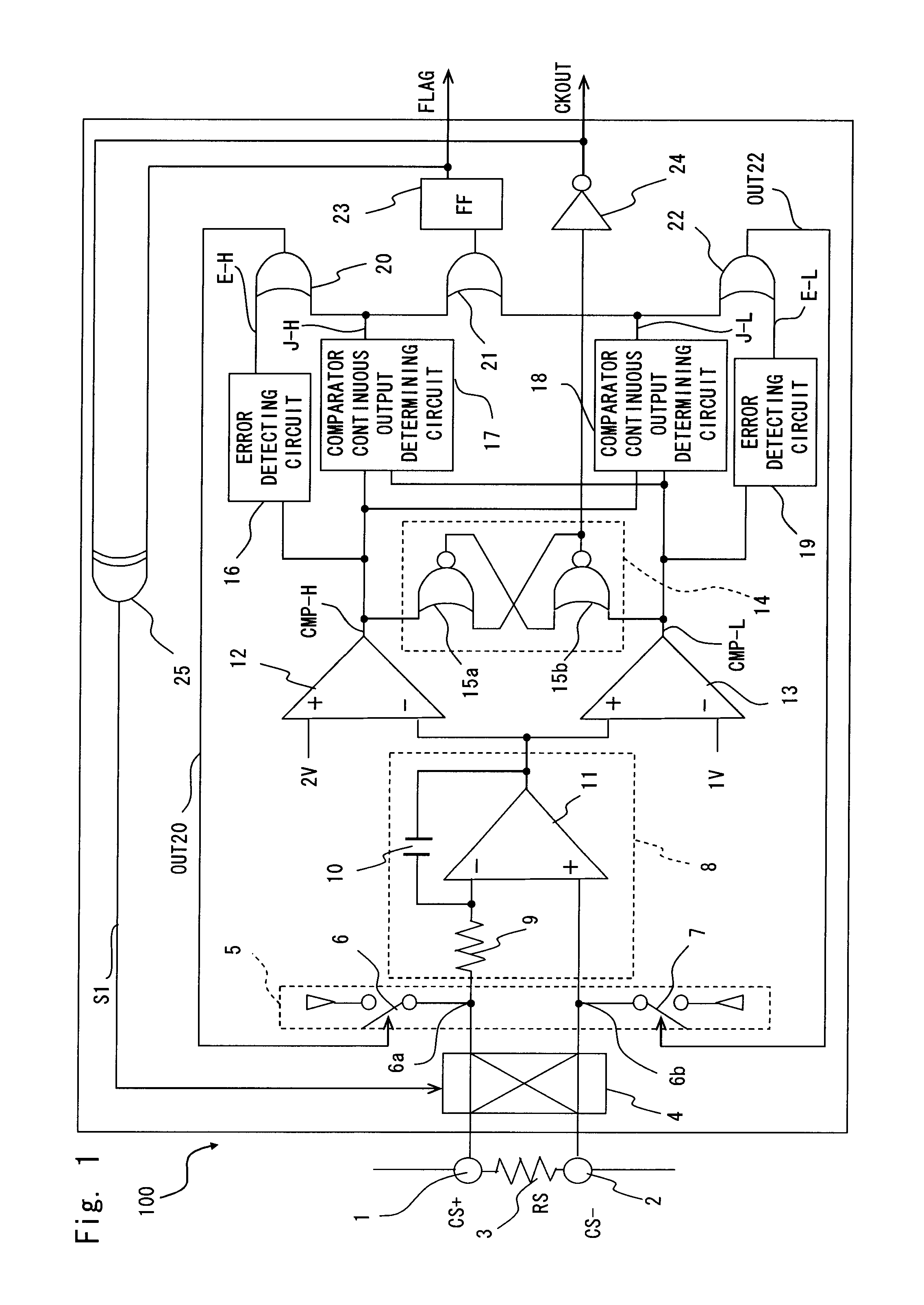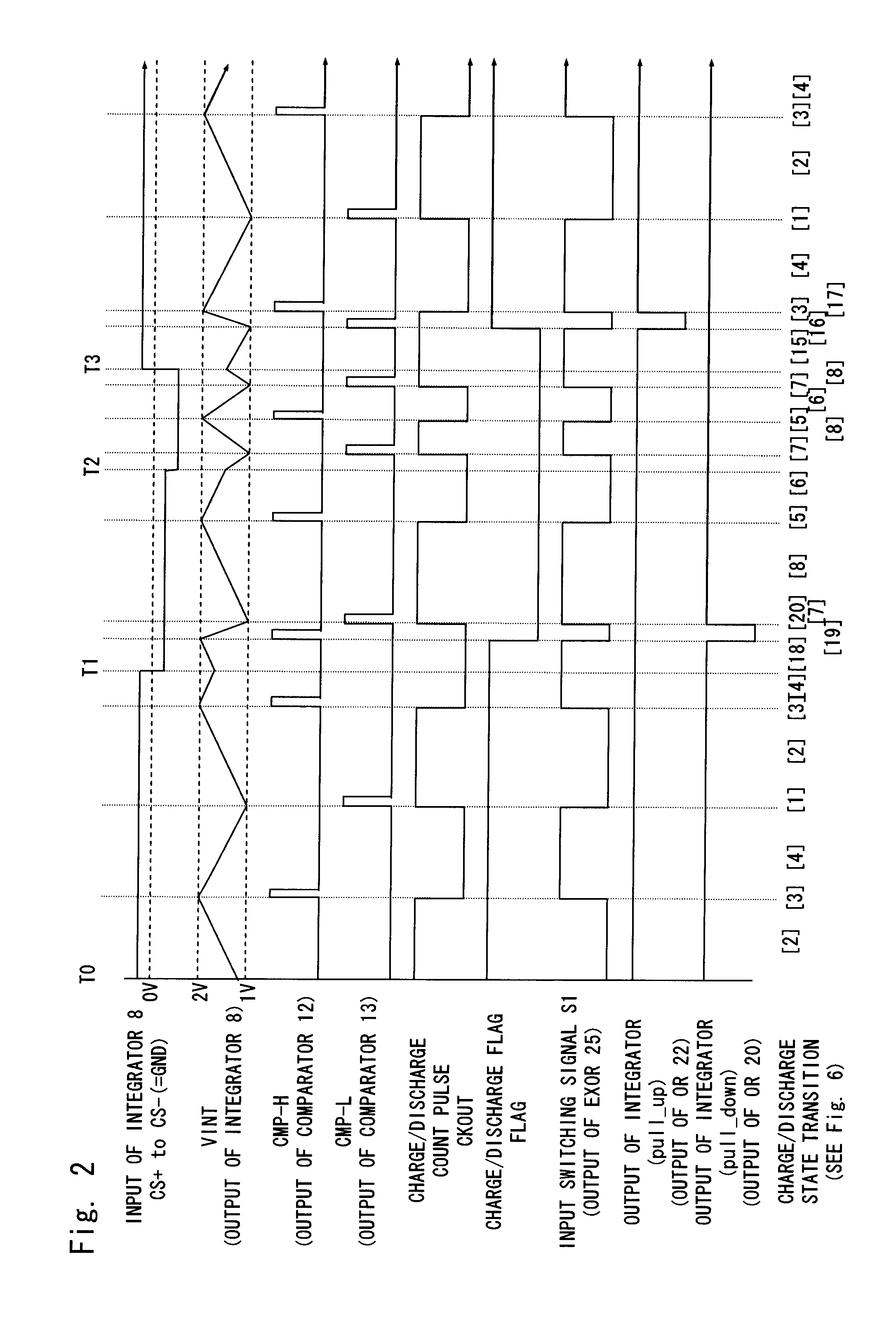Voltage-pulse converting circuit and charge control system
a voltage-pulse converting circuit and charge control technology, applied in pulse manipulation, pulse technique, instruments, etc., can solve the problems of increasing the chip size of the integrated circuit, the difficulty of determining whether the input voltage is a positive or negative voltage, and the cost increase, so as to reduce the configuration of the circuit and save power consumption
- Summary
- Abstract
- Description
- Claims
- Application Information
AI Technical Summary
Benefits of technology
Problems solved by technology
Method used
Image
Examples
first embodiment
[0034]FIG. 1 is a block diagram of a voltage-pulse converting circuit according to a first embodiment of the present invention, and FIGS. 2 and 3 show an operational waveform example thereof. FIG. 4 illustrates state transition of a voltage-pulse converting circuit 100 of this embodiment.
[0035]As shown in FIG. 1, the voltage-pulse converting circuit 100 includes an input switching circuit 4, an integrator output inductive unit 5 as a voltage inductive unit, an integrator 8, first and second comparators 12 and 13 (window comparator), an RS latch circuit 14, first and second integrator output error detecting circuits 16 and 19, first and second comparator continuous output determining circuits 17 and 18, and a flip-flop FF 23 as a flag output unit.
[0036]The input switching circuit 4 is connected between one terminal (CS positive terminal) 1 and the other terminal (CS negative terminal) 3 of a current sensing resistor (RS) 3, and two input terminals of an integrator 8. A current sensin...
second embodiment
[0069]Next, a voltage-pulse converting circuit according to a second embodiment of the present invention is described. FIG. 5 is a block diagram of the voltage-pulse converting circuit of this embodiment. Incidentally, in this embodiment as shown in FIG. 5, the same components as those of the first embodiment as shown in FIG. 1 are denoted by like reference numerals, and detailed description thereof is omitted.
[0070]As shown in FIG. 5, a voltage-pulse converting circuit 130 of this embodiment differs from the first embodiment in terms of a connection position of the output inductive unit of the integrator. That is, in the first embodiment, the integrator output inductive unit 5 is connected between the input switching circuit 4 and two input terminals of the integrator 8. In this embodiment, the unit is directly connected with an output terminal of the integrator 8.
[0071]In an integrator output inductive unit 35, a switch 36 turned ON / OFF based on the output OUT20 of the OR circuit ...
PUM
 Login to View More
Login to View More Abstract
Description
Claims
Application Information
 Login to View More
Login to View More - R&D
- Intellectual Property
- Life Sciences
- Materials
- Tech Scout
- Unparalleled Data Quality
- Higher Quality Content
- 60% Fewer Hallucinations
Browse by: Latest US Patents, China's latest patents, Technical Efficacy Thesaurus, Application Domain, Technology Topic, Popular Technical Reports.
© 2025 PatSnap. All rights reserved.Legal|Privacy policy|Modern Slavery Act Transparency Statement|Sitemap|About US| Contact US: help@patsnap.com



